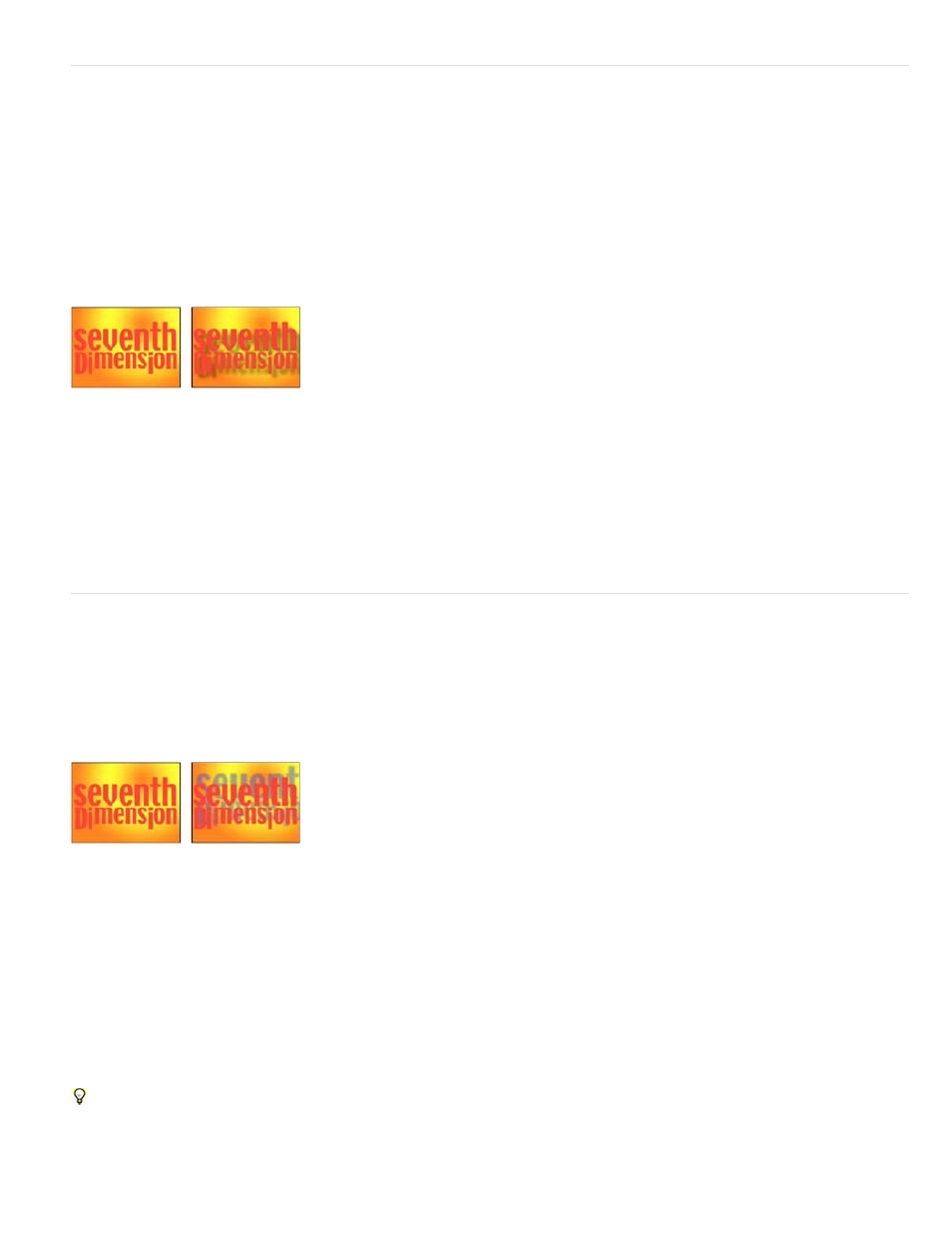Drop shadow effect radial shadow effect, Drop shadow effect, Radial shadow effect – Adobe After Effects User Manual
Page 505

Note:
Shadow Color
Note:
Opacity
Light Source
Projection Distance
Drop Shadow effect
The Drop Shadow effect adds a shadow that appears behind the layer. The alpha channel of the layer determines the shape of the shadow.
When you add a drop shadow to a layer, a soft-edged outline of the alpha channel of the layer appears behind it, as if a shadow is cast on the
background or underlying objects.
Drop Shadow can create a shadow outside the bounds of the layer. The quality setting of the layer affects the subpixel positioning of the shadow
and the smoothness of the soft edges of the shadow.
For some purposes, the Drop Shadow layer style is preferable to the Drop Shadow effect. (See Layer styles.)
This effect works with 8-bpc and 16-bpc color. In After Effects CS6 or later, this effect works in 32-bit color.
Original (left), and with effect applied (right)
To render the shadow without the image, select Shadow Only.
To apply a drop shadow to a layer that rotates, rotate the layer using the Transform effect and then apply the Drop Shadow effect. You can
also use nesting, precomposing, or an adjustment layer to achieve this result. If you don’t use one of these methods, the shadow rotates with the
layer.
Radial Shadow effect
The Radial Shadow effect creates a shadow from a point light source over the layer it’s applied to, rather than from an infinite light source (as with
the Drop Shadow effect). The shadow is cast from the alpha channel of the source layer, allowing the color of that layer to influence the color of
the shadow as light passes through semitransparent areas. You can use this effect to make a 3D layer appear to cast a shadow onto a 2D layer.
This effect works with 8-bpc color.
Original (left), and with effect applied (right)
The color of the shadow.
The colors of the layer may override this option if you choose Glass Edges from the Render control menu. See the Render and Color
Influence controls for more information.
The opacity of the shadow.
The location of the point light source.
Copy and paste position keyframes or expressions from a control point for another effect (for example, Lens Flare) to quickly create a shadow
that matches the light source for another effect.
The distance from the layer to the surface on which the shadow falls. The shadow appears larger as this value increases.
501
